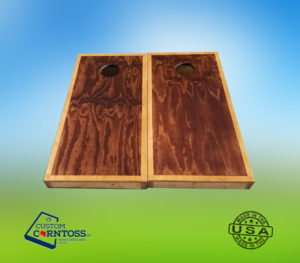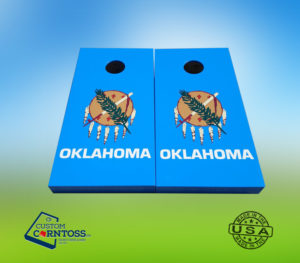Buying Cornhole Boards
Buying Cornhole Boards: Wood or Plastic?
Whether you are an aficionado or a newcomer to the wonderful world of cornhole, one of the most important decisions you will make is actually buying cornhole boards.
The major decision to make when buying cornhole boards is to choose your material. Most boards are made of either wood or plastic, so we are here to break down the pros and cons of both of these materials.
Wood Boards
 Through much of the history of cornhole, wood boards have been the golden standard.
Through much of the history of cornhole, wood boards have been the golden standard.
In official tournaments, wood is still the de facto board material. Most cornhole players prefer wood boards because of the level of control that players have on a wood surface.
Bags do not slide on wood like they do on plastic, which allows players to develop a stronger strategy and technique.
That said, wood boards can have a variety of finishes that affect gameplay. Adding different paint or varnish can either increase or decrease the sliding factor, depending on the type of play that the board owner prefers.
Cornhole fans also tend to prefer wood boards because it is relatively easy to build your own boards with this material. Many people enjoy the process of building and then playing with the set that they made by hand. Though of course you can also purchase high-quality, hand-crafted wood boards too.
If you have an artistic cornhole lover on your gift list, a set of ready-to-paint wood board is one of many great cornhole Christmas gifts. You can buy one of our awesome unpainted sets here.
On the downside, wood boards tend to be a little heavier, so they can be moderately difficult to transport.
They also require a higher degree of care, due to the fact that they are made from natural materials. For example, you can’t leave them out in the elements overnight. However, you can protect your board with a sealant finish to reduce chances of problems later.
Plastic Boards
 On the other hand, plastic boards are preferred by some for convenience reasons. Casual players and those who plan on transporting their boards frequently–such as for camping or for cornhole in gym class–may prefer the lightweight plastic version of cornhole boards because they are more portable.
On the other hand, plastic boards are preferred by some for convenience reasons. Casual players and those who plan on transporting their boards frequently–such as for camping or for cornhole in gym class–may prefer the lightweight plastic version of cornhole boards because they are more portable.
Plastic boards also tend to fare better when neglected. While wood warps and rots if it gets wet for extended periods of time, plastic boards hold up to the elements.
Like wood boards, a plastic set can be customized—but not much. You can add a sticker or decal, but that’s about it. You can’t get the amazing, detailed artwork that is available for wood boards.
Plastic boards have a unique feel that is quite different from playing with regulation wood boards. As mentioned above, plastic boards have a higher sliding factor, meaning that your bags may not stay on the plastic as they would on a wood board.
This requires developing a different technique that may frustrate some experienced cornhole players. And if your boards are causing frustration with other players, you might be playing alone!
The decision of wood versus plastic you make when buying cornhole boards is a personal one. Ultimately, you will need to consider the experience you would like to have and the way in which you hope to use your cornhole boards.
Custom Corntoss has a great selection of wood cornhole boards. You might think you want plastic, but you should give wood a try first! Take a look at all the options we have available.
